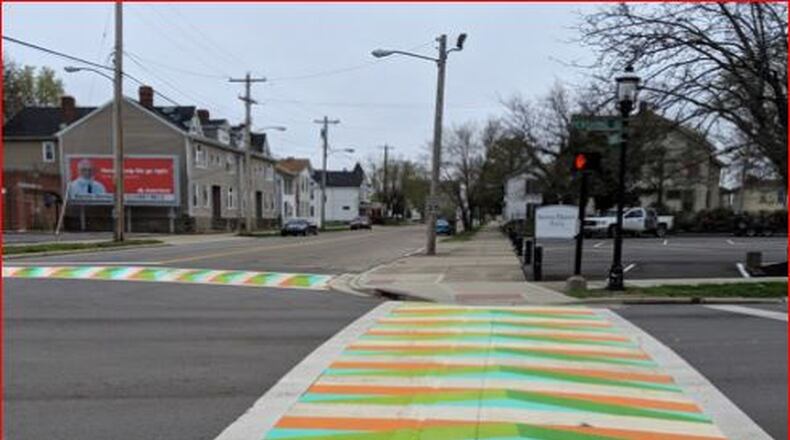“The Second Ward Revitalization Plan focuses on the revitalization of the Second Ward through the improvement of existing housing stock, attraction of new businesses, and improved amenities, all while maintaining the character and integrity of the existing community,” Edward Wilson III, Associate Planner II with the city, wrote in a September memo to council.
The Miami planning students, most of them seniors, worked with the Southeast Civic Association (SECA), other local residents and city staff in creation of the plan, which focused on the neighborhood’s main corridors, including 2nd Street, Central Avenue, Pershing Avenue and the Bailey Square area.
The council held a first of two required considerations at its Sept. 25 meeting, with the second expected Wednesday. Residents of the neighborhood, which is located south of downtown immediately east of the Great Miami River, hope their area will benefit from economic activity created by the proposed Spooky Nook Sports Champion Mill, the convention center and gigantic indoor sports complex that is to open in 2021 on North B St.
Bob Harris, the president of SECA, said he likes aspects of the development plan that call for brightening up of the neighborhood with murals and vibrant crosswalks and intersection decorations, but most important is creating a neighborhood that is clean and welcoming to people who would be the customers of new businesses.
“I’ve always said that we have to clean up the community and make it user-friendly,” so people feel safe, Harris said, “which is, to me, the top priority.”
Also, it’s important to have people with good jobs living in the neighborhood again, he said.
“In a community, you need firemen, you need policemen, you need plumbers, you need doctors, you have to have these things in order to support your community,” Harris said. “And you need to have the dollars that come into your community turn over in your community before they leave completely out of your community.”
The neighborhood isn’t clean enough, and lacks professionals, he said.
“I can’t name you one doctor that lives in our community,” he said. “I can’t name you one lawyer,” and he likewise can’t name firefighters or police officers living in the neighborhood.
“We need partnerships with the city and any agencies that can help facilitate and promote that type of growth, and we need to clean up those areas,” said Harris, who for many years has organized an annual cleanup that the city helps with.
Education and trade skills also are important in rebuilding the neighborhood, he said.
“A small business district is important, and another thing is to encourage home ownership,” he said.
Miami’s 35-page strategy suggested relatively inexpensive, and quick, ways to brighten the neighborhood and make it more dynamic and mark the Second Ward as a unique and interesting place. Some ideas included entry arches announcing people are in the neighborhood, temporary performance spaces and places where food trucks can visit, as well as eye-catching murals and outdoor sculptures.
But one of the study’s most unique ideas — brightly colored crosswalks — recently was discouraged by the U.S. Department of Transportation’s Federal Highway Administration in Ames, Iowa, where crosswalks were painted with multiple colors.
The Miami students suggested the Second Ward’s pedestrian crossings — the type typically marked with bold white stripes — be painted using dynamic shapes and multiple bright colors. They also suggested the possibility of beautifying entire intersection areas between the pedestrian crossings, also with vibrant designs.
But the FHWA wrote a letter, according to KCCI-TV in Des Moines, stating that crosswalks with any paint other than white were not allowed. The ones in Ames were painted using a “rainbow” of colors to indicate an inclusive place. The federal agency asked the city to remove “the non-compliant crosswalk art as soon as it is feasible.”
About the Author



